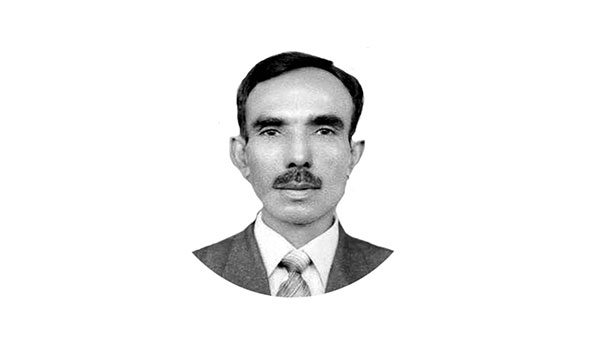Kashmir Martyrs’ Day: War of liberation continues
EVERY year, Kashmir Martyrs’ Day (Youme Shudaha-e-Kashmir) is commemorated on 13 July in the memory of 21 Kashmiris who were martyred outside Srinagar Central Jail by the troops of Dogra Maharaja on 13 July 1931.
This very day is observed on both sides of the Line of Control and all over the world by the Kashmiris, including their Pakistani brethren to pay homage to these Kashmiris.
In fact, the history of Dogra rule (1846-1947) in Kashmir is replete with tyrannous treatment meted out to the Kashmiri Muslims by Dogra forces.
Under the Dogra rule, they were leading so miserable life that it was difficult to differentiate them from beasts.
Slave labour, heavy taxes, capital punishment for cow slaughter and living under constant terror was order of the day.
On 19 April 1931, the ban of Eid Khutba (Sermon) ignited widespread demonstrations in the Jummu city for a number of days.
It was followed by desecration of the Holy Quran at the hands of Dogra forces which resulted into outrage among the Muslims throughout the state.
In Srinagar, people gathered in Jamia Masjid to denounce this blasphemy. One such get-together was held in Khankah-e-Muella Srinagar which was addressed by prominent Kashmiris.
When the meeting was concluded, a youth, Abdul Qadeer, pointing his finger to the Maharaja’s palace, raised slogans “destroy its every brick.
” With the accusation of sedition, he was arrested forthwith. Abdul Qadeer was to be tried in the court, but due to large public resentment, the court was shifted to Central Jail Srinagar.
On 12 July 1931, in response to the shifting of court, intense public protests were held throughout the city.
The next day, on 13 July 1931, thousands of people thronged the Central Jail Srinagar to witness the in-camera trial of Abdul Qadeer.
As the time for obligatory prayer approached, a young Kashmiri stood for Azan. The Dogra Governor, Ray Zada Tartilok Chand ordered soldiers to open fire at him.
When he got martyred, another young man took his place and started Azan. He was also shot dead.
In this way, 21 Kashmiris embraced martyrdom in their efforts to complete the Azan. The people carried the dead and paraded through the streets of Srinagar, chanting slogans against Dogra brutalities.
Complete strike was observed in the city which was followed by a week-long mourning.
This incident shook the entire State and the traffic from Srinagar to Rawalpindi and Srinagar to Jammu came to a halt from 13 to 26 July 1931.
The 21 martyrs are buried in Martyrs’ Graveyard at Khawaja Bazar, Srinagar. Consequent upon these brutal killings, the Kashmiri leadership realized the need to form a political party, Muslim Conference (MC) with a view to waging struggle for their freedom.
Afterwards, on 19 July 1947, MC passed a resolution to accede Jammu and Kashmir to Pakistan, considering the geographical proximity—majority of Muslim population (77%), language and cultural relations of Jammu and Kashmir.
During the partition of the sub-continent, the people of the State of Jammu and Kashmir (J&K) which comprised Muslim majority decided to join Pakistan.
But, Dogra Raja, Sir Hari Singh, a Hindu who was ruling over the J&K in collusion with the Indian Prime Minister Jawaharlal Nehru and Governor General Lord Mountbatten joined India.
The Radcliffe Boundary Award gave the Gurdaspur District—a majority Muslim area to India to provide a land route to the Indian forces to move into the J&K.
Indian forces invaded Srinagar on 27 October 1947 and forcibly occupied the J&K in utter violation of the partition plan.
When Pakistan responded militarily, on 31 December 1947, India made an appeal to the UN Security Council to intervene and a ceasefire ultimately came into effect on January 01, 1949, following UN resolutions calling for a plebiscite in Kashmir.
On 5 February 1964, India backed out of its commitment of holding plebiscite. Instead, Indian Parliament declared Kashmir — an integral part of the Indian Union.
Since 1989, various forms of State terrorism have been part of a deliberate campaign by the Indian Army and paramilitary forces against Muslim Kashmiris.
It has been manifested in brutal tactics like crackdown, curfew, illegal detention, massacre, targeted killing, siege, burning the houses, torture, disappearances, rape, breaking the legs, molestation of Muslim women and killing through fake encounters.
After the Indian fanatic Prime Minister Narendra Modi — the leader of the extremist ruling party BJP — came to power in 2014, he took various drastic steps such as abrogation of the special status of the disputed territory of the Indian Illegally Occupied Jammu and Kashmir (IIOJK), revocation of Articles 35-A and 370 of the Constitution—bifurcation of the IIOJK into two territories to be ruled directly by New Delhi, continued lockdown there, deployment of more than 900,000 military troops that have martyred thousands of the innocent Kashmiris through brutal tactics, amendment of the law, allowing Indian citizens to buy land in the IIOJK and issuance of domicile certificates to more than 800000 non-Kashmiris.
And Indian forces have been also availing various draconian laws such as Armed Forces Special Powers Act (AFSPA), the Public Safety Act (PSA) etc in martyring the Kashmiri people, and for arbitrarily arrest of any individual for an indefinite period.
Besides UNO, Human Rights Watch, Amnesty International and various rights groups have also pointed out grave human rights violations in the IIOJK.
Nevertheless, observing the Martyrs’ Day on 13 July Kashmiris renew their pledge to continue the ongoing war of liberation for the accomplishment of their legitimate right of self-determination as recognised by the related resolutions of the UNO, In this respect, the Martyrs’ Day gives a new impetus to the Kashmiris’ struggle.
—The writer is contributing columnist, based in Lahore.










